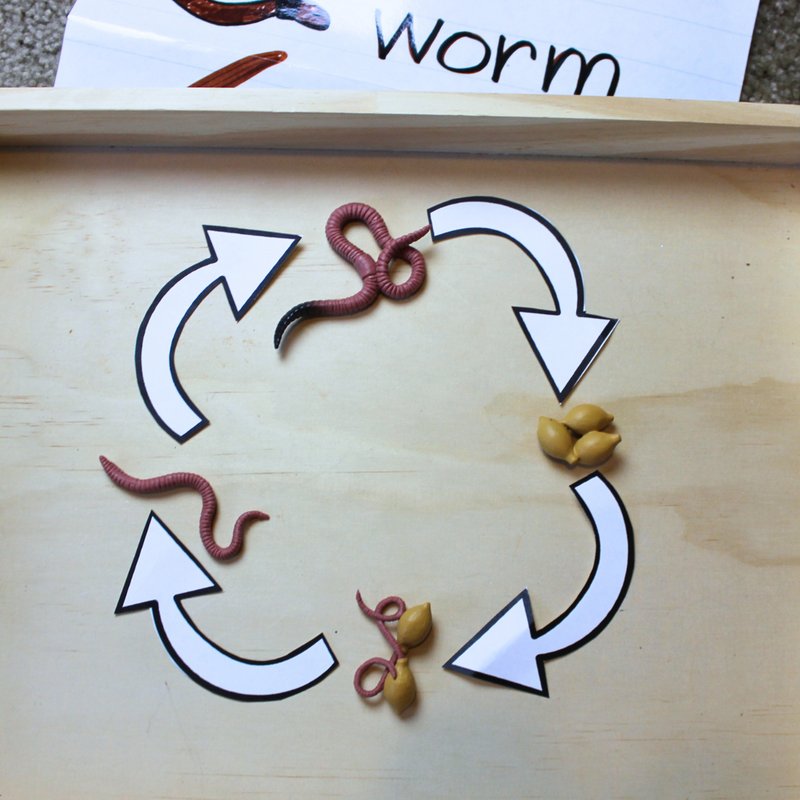
Picture a tiny egg nestled in a leaf—the start of a remarkable journey. This journey isn’t just about survival; it’s a complex, delicate series of events that researchers often study in natural habitats. If you’re keen on documenting this process—perhaps for a classroom project or personal curiosity—this guide will walk you through the life cycle of wolf worms, shedding light on how to go about observing these transformations in their natural settings.
Understanding the Life Cycle of Wolf Worms
Wolf worms have a fascinating life cycle consisting of four main stages: egg, larva, pupa, and adult moth. Each of these stages presents a different set of characteristics and behaviors that are crucial for the survival of the species. For anyone studying these creatures, it’s essential to recognize these transitions and understand how they interact with their environment.
Egg Stage
The life of a wolf worm begins as a tiny, round egg. Female moths lay clusters of eggs on the leaves of specific host plants, typically in late spring. This strategic placement is vital since it ensures that the newly hatched larvae have immediate access to food.
At this stage, the eggs are particularly vulnerable to predators and environmental factors. If you’re documenting this stage, you’ll want to check on them regularly. Not only is it exciting to watch the eggs develop, but it also gives insights into their survival strategies. Use a small notebook or an app to note the dates and locations of your findings, as this can be helpful for later observations.
Larval Stage
Once the eggs hatch, they become larva—commonly referred to as caterpillars. This is arguably the most visually impressive stage, as they grow rapidly and go through several molts. During this time, they have voracious appetites, munching on leaves and growing larger by the day.
You might be wondering why this stage is so significant. Well, it’s during the larval phase that wolf worms build their energy reserves. As you observe them, take note of their eating habits, colors, and any defensive behaviors, such as mimicking twigs or leaves to evade predators. Documenting these traits can provide valuable data on their adaptability in the wild.
Transition to Pupation
After several weeks of feeding and growing, the caterpillars enter the pupal stage. This is a transformative period where significant changes occur. The larva creates a protective casing around itself known as a chrysalis. Taking care to document this phase is crucial, as it represents the culmination of its larval life.
Finding a Pupation Site
When the caterpillars are ready to pupate, they search for safe, secure locations. You might find them under leaves, in shrubbery, or even in crevices in the ground. As you monitor this process, it’s a good idea to highlight the environmental conditions that seem to facilitate successful pupation. Keep a checklist of potential sites, noting factors like humidity, temperature, and food availability nearby.
Observing the pupation stage can be quite thrilling. This is the time when the future moth is developing its features—like wings and reproductive organs—hidden from view. Patience is key here. If you’re out in the field, consider taking photos over days or weeks to document how the chrysalis changes.
The Emergence of the Adult Moth
After a few weeks in the pupal stage, the adult moth emerges, fully formed and often with impressive wings. This is where the story of the wolf worm comes full circle. The transformation from a lowly caterpillar to a beautiful moth is not just visually stunning; it’s crucial for reproduction and the continuation of their species.
Documenting Adult Moths
When the moths emerge, they are initially soft and vulnerable. They pump their wings full of blood and allow them to dry and expand before they can take flight. This is an excellent opportunity to observe and document behaviors. Pay attention to their mating rituals, feeding patterns, and how they evade predators.
As you observe adult moths, you may also notice their role in the ecosystem, such as how they interact with flowers for nectar. Create a separate section in your notes for this, as these details are essential for understanding their impact on the environment.
Challenges in Documentation
While documenting the life cycle of wolf worms can be rewarding, it’s not without its challenges. You might encounter issues like harsh weather conditions or the presence of predators that can disrupt your observations.
Weather Considerations
Weather plays a significant role in a field study. Rain, wind, and extreme temperatures can affect the visibility and behavior of wolf worms and their habitats. Always check the forecast before heading out, and try to choose days with mild weather for better chances of seeing activity.
Keep a running journal of the weather conditions during your observations. This could provide valuable context for your findings and highlight correlations between environmental factors and wolf worm behavior.
Tools for Effective Documentation
To effectively document the wolf worm life cycle, you’ll need the right tools. Think of this as gearing up for a mini adventure. Your toolkit might include:
- Notebook: For jotting down observations and sketches.
- Camera: To capture images of different life stages.
- Field Guide: For identifying plants and potential predators.
- Binoculars: For observing from a distance without disturbing them.
Having the right gear can make a huge difference in your documentation efforts. It allows you to capture moments and details that you might miss otherwise.
Why Documenting Wolf Worm Life Cycle Matters
You might wonder why documenting the life cycle of wolf worms is important. Well, understanding their growth and development patterns can provide insights into broader ecological relationships. It helps scientists and enthusiasts alike grasp how changes in the environment—like habitat loss or climate change—can impact not just individual species, but entire ecosystems.
This knowledge can guide conservation efforts and help ensure that these beautiful creatures continue to thrive. So, as you embark on your field study, know that you’re part of a bigger picture.
In conclusion, documenting the life cycle of wolf worms is more than just a scientific endeavor; it’s a journey through nature’s marvels. Whether you’re a student, educator, or simply an avid nature lover, taking the time to observe and record these changes can be incredibly fulfilling. With patience, the right tools, and a curious mind, you’ll uncover the secrets hidden in the life cycle of these remarkable creatures. Happy observing!

